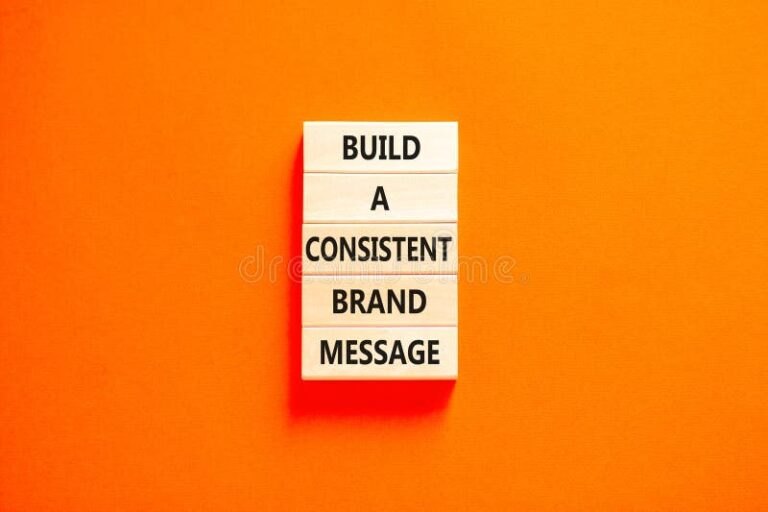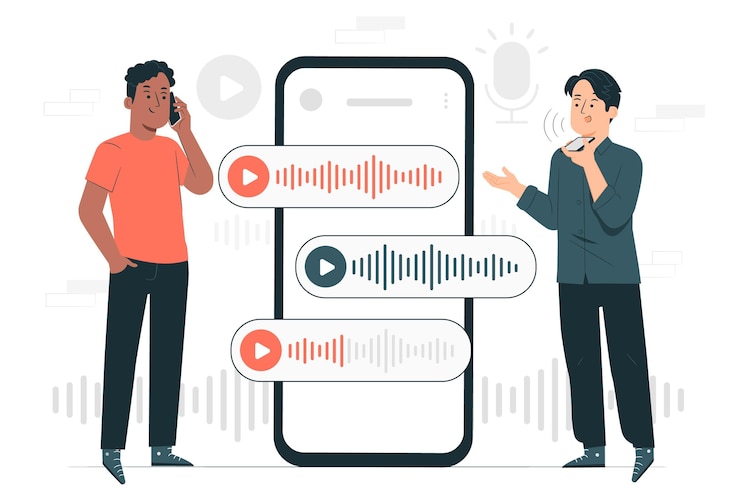Key Takeaways
- Understanding what your audience is looking for (user intent) is the secret sauce to creating content that connects with B2B audiences and boosts your SEO.
- Matching your content with the right intent-whether it’s navigational, informational, or transactional—keeps you relevant throughout the buyer’s journey.
- Keeping tabs on your performance data and tweaking your approach over time is how you ensure long-term success.
If you want to see real results and form meaningful connections with your audience, it’s time to level up your SEO game by focusing on user intent. This is all about figuring out what your audience really wants when they search for something-and delivering content that meets them where they are.
User intent is the "why" behind a search. Are they looking for answers, heading to a specific site, or ready to make a move? Once you know their goal, you can tailor your content to meet their needs and create a digital presence that makes a real impact.
In this blog, we’re breaking down the different types of user intent, how to shape your strategy around it, and offering a few tips to boost your SEO results. By the time you’re done reading, you’ll have actionable insights to better serve your audience and stay ahead of the competition.
What is User Intent and Why Does it Matter?
In the B2B world, user intent is the bridge between what people search for and the results they’re hoping to find. When you understand what your audience is looking for, you can create content that directly meets their needs. This not only makes your content more relevant but also drives stronger engagement and higher conversions.
Types of User Intent
To fully harness the power of user intent, it’s important to know the different types and how they shape search behavior. Here’s a breakdown of the three main categories:
Navigational Intent: These users are on a mission to find a specific website, brand, or page. Their searches are often straightforward, using terms like “HubSpot login” or “Salesforce support page.” They know exactly what they want and expect to find it quickly.
- Practice tip: In the B2B space, catering to navigational intent means ensuring your site is easy to find for branded terms. Make sure key pages like logins, support hubs, or contact portals are front and center in search results.
Informational Intent: These users are looking to learn something new or answer a specific question, such as “What is account-based marketing?” or “Best practices for B2B lead generation.”
- Practice tip: To meet informational intent, provide high-value content like blog posts, white papers, or guides that answer these questions in-depth. Offering helpful, authoritative information builds trust with potential buyers early in their journey.
Transactional Intent: Users with transactional intent are ready to make a move-they’re looking to buy, schedule, or sign up. Their searches often include phrases like “Buy B2B email lists” or “Schedule a demo for marketing automation software.”
- Practice tip: For these users, the focus should be on creating an easy, compelling path to conversion. Think landing pages with strong calls-to-action, clear navigation, and trust-building elements like customer testimonials.
Understanding these different types of user intent and tailoring your strategy accordingly can help you deliver exactly what your audience needs at every stage of their journey.
Using Search Data to Understand User Intent
Identifying user intent starts with truly understanding what drives your audience's search behavior. Why are they searching? What are they hoping to find? Tools like Google Search Console, SEMrush, and Ahrefs can give you a treasure trove of data, showing you the keywords people are using, their click-through rates, and the pages they visit most often.
Keep an eye on specific keyword modifiers-they’re like breadcrumbs that lead you to the user’s intent:
- Words like “how to” or “guide” often point to informational intent.
- Phrases like “best” or “compare” suggest your audience is weighing options, signaling consideration-stage intent.
- Terms like “buy” or “demo” are a clear indicator of transactional intent.
By analyzing these patterns, you’ll not only get a clearer picture of what your audience wants but also where they are in their buyer’s journey. This insight is key to creating content that meets them right where they are.
Aligning Content with the Marketing Funnel
B2B buyers don’t make snap decisions-they take their time, moving through a journey that includes awareness, consideration, and decision stages. Each stage reflects a different level of intent, so aligning your content with these stages ensures you’re delivering the right message at the right moment, keeping your brand relevant and guiding prospects toward conversion.
Here’s how to align your strategy with each stage:
Awareness Stage (Informational Intent)
At this early stage, buyers are exploring their challenges and searching for general information. They might not even know about your solution yet, so your content should focus on educating and building trust.
Examples of content for this stage:
- Educational blog posts like “What is user intent in SEO?”
- Comprehensive guides on industry-specific topics.
Your goal here is simple: position your brand as a helpful, reliable resource. A strong first impression can draw users into your funnel and keep them coming back for more.
Consideration Stage (Navigational or Informational Intent)
By the time buyers reach this stage, they’ve identified their pain points and are actively evaluating their options. This is your chance to help them weigh their choices and show why your solution stands out.
Examples of content for this stage:
- Comparison guides like “Top 5 CRM Platforms for B2B Companies.”
- Case studies showcasing how you’ve solved similar problems for others.
This is where you position yourself as a top contender by providing clarity and evidence that you’re the right choice.
Decision Stage (Transactional Intent)
At the decision stage, buyers are ready to act. They’re looking for information that reassures them, reinforces trust, and confirms your value proposition.
Examples of content for this stage:
- Case studies with proven results.
- Testimonials from satisfied clients.
- ROI-focused insights that demonstrate the tangible value of your offering.
Your goal here is to give them the confidence they need to make a well-informed decision, one that ends with your brand as their choice.
By understanding and addressing the nuances of user intent at every stage, you can develop a results-driven content strategy that nurtures leads, builds trust, and drives measurable success.
Landing Pages: the Gateway to Conversions
Landing pages are where the magic happens-they’re often the first stop for users with transactional intent and play a huge role in driving conversions. These pages grab attention, guide decision-making, and encourage users to take action. When done right, they’re not just pages; they’re powerful conversion tools that create a seamless experience.
Want to make your landing pages as effective as possible? Here’s how:
- Laser-focus on user goals: Keep each page centered on a single, clear objective that aligns with what the user wants to achieve.
- Use action-oriented CTAs: Include strong, straightforward calls-to-action like “Download Now” or “Schedule a Call” to lead users toward their next step.
- Incorporate social proof: Build trust by showcasing testimonials, case studies, or success stats to reinforce credibility.
- Provide value for informational intent: If users are exploring, give them rich, engaging content that sparks curiosity and keeps them clicking around your site.
- Test and assess: Regularly tweak your CTAs and page elements based on performance data to ensure they resonate and deliver results.
When your landing pages align with user intent, they do more than boost your SEO-they create an experience that feels seamless and satisfying. By meeting users exactly where they are in their journey, you’re building trust, driving engagement, and turning visits into meaningful actions.
Leveraging Analytics to Measure and Refine User Intent Alignment
Measuring how well your content connects with your audience starts with digging into the numbers and analyzing behaviors. Tools like Google Analytics give you the insights you need to see if your content is hitting the mark or missing the point.
Here are the key metrics to keep an eye on:
- Bounce Rate: A high bounce rate might mean users aren’t finding what they’re looking for. It’s often a sign that your content isn’t aligned with their intent.
- Time on Page and Session Duration: If engagement times are low, your content may not be engaging enough to hold attention.
- Pages Per Session: When users explore multiple pages, it’s a good sign your content is guiding them effectively through their journey.
- Conversions: Actions like form submissions, downloads, or demo requests show how well your content drives meaningful outcomes.
- Organic Traffic: An increase in search-driven traffic indicates that your content is doing a great job capturing user intent and boosting visibility.
By analyzing these metrics, you can identify areas to improve and uncover opportunities. For example:
- A high bounce rate? Your content may need to be more focused or relevant.
- Short session durations? Try creating more engaging, visually appealing content.
The key is regular review and adjustment. This iterative approach keeps your content aligned with user intent while evolving alongside audience needs and search trends. It’s how you stay competitive, deepen engagement, and guide users smoothly through the buyer’s journey.
Pro Tip: Test, test, test! A/B test headlines, CTAs, and page layouts to see what resonates most. Use heatmaps to track where users spend their time and adjust accordingly for maximum impact.
The Advantage of Understanding User Intent
In competitive B2B markets, knowing what your audience wants and delivering it is a game changer. Understanding user intent isn’t just a nice-to-have; it’s a must-have for building real connections that drive engagement and deliver measurable results.
To get this right, you need a thoughtful, deliberate approach that combines data-driven insights, creativity, and a deep understanding of your audience. It’s not just about ranking well on Google; it’s about creating content that genuinely resonates with users and meets them exactly where they are in their journey. As the digital world keeps evolving, businesses that focus on intent-driven strategies are the ones that will adapt, thrive, and grow long-term.
Unlock the Power of Intent-Driven SEO
At Cureight, we specialize in SEO and content marketing solutions that align your content with user intent, delivering results that matter. By crafting strategic, targeted content and optimizing key pages, we ensure your SEO efforts are not only effective but also drive measurable outcomes for your business.
Ready to take your SEO strategy to the next level? Let’s talk! Connect with us today and discover how we can help you harness the power of user intent to achieve your business goals.


